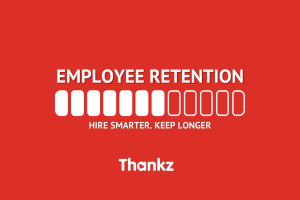Let’s face it: It’s really hard to have a successful business today without a website. Even if you do have a website, it doesn’t guarantee the right people will see it, explore it, and become a customer or client. There are a wide variety of factors that go into having a website that converts traffic to leads or sales.
And it’s not enough to get a high volume of visits to your site. It’s far more important to attract the right kind of visitors—ones who are interested in your content, products, or services, and who have an intent to purchase them. For example, let’s say you sell newborn baby clothes (either online or brick and mortar). Your primary target is probably pregnant women. As such, visitors to your site who aren’t pregnant women are at best secondary audiences (partners of pregnant women), tertiary (family members/friends), or just irrelevant (teens, for example). It only makes sense that attracting as many of your primary targets would be a priority in this scenario since they’re the ones who are most likely to buy from you.
This is the main reason why many businesses rely heavily on organic traffic. And one essential method for getting high-quality website traffic is search engine optimization (SEO). For those unfamiliar with SEO, this is the process of optimizing both contents and some technical aspects of your site to help you rank better in search engines. There are a number of tactics that go into getting your site on top of search engine results. Here are a few of the most important steps you can take to earn high-quality website traffic.
Understand the Keywords that Drive Traffic
Keywords are the terms site visitors use in search engines, such as “onesies” or “baby pajamas” like in the example above. When it comes to buying products or services, most people pull up a web browser and type in a few keywords to see what comes up. That’s why it’s essential to know what people are searching for when they come to your site.
What’s more, it’s a good idea to try to understand what keywords are driving conversions. For the example of a baby clothing retailer, terms like “baby clothes” might draw a lot of traffic (that’s a good thing), but not a very high conversion rate. Conversely, maybe a keyword like “newborn baby cap,” which is far more specific, drives less traffic but has a high conversion rate. In terms of your site, it’s important to understand which words are driving traffic and which are driving conversions in order to optimize your website around those keywords.
Understand the Impact Headers Have
Headers, or headlines, have a significant impact on how your site ranks for keywords in search engines. Not only do the headlines on your site need to catch people’s eye, but they also have to include your keywords! In terms of search engines, headlines signify that the content included on the page is relevant to a particular search term. They’re like a blinking neon sign for the search engines.
Understand Title and Meta Tags
You’ve probably done plenty of searches in your life, so you know that search engine results always include a page title and a short description/summary of the page. These are taken from “meta tags” on each page of your website. Think of a meta tag as a sort of signpost that tells search engines what information is on the page. Every page on your site should include as many meta tags as possible and use your core keywords for each page. Meta tags include (but aren’t limited to):
- Title
- Description
- Keywords
- Copywright
- Language
Here’s a large list of meta tags you might want to consider using on each page of your website. Now, you don’t have to necessarily include every meta tag on every single page. Only include the ones that give you an opportunity to use your keywords.
If you need an SEO expert, Thankz has you covered! We have an army of SEO experts ready to help you conquer the front page of Google. Contact us to get helping find the Thankz Expertz who will help you grow your business.




